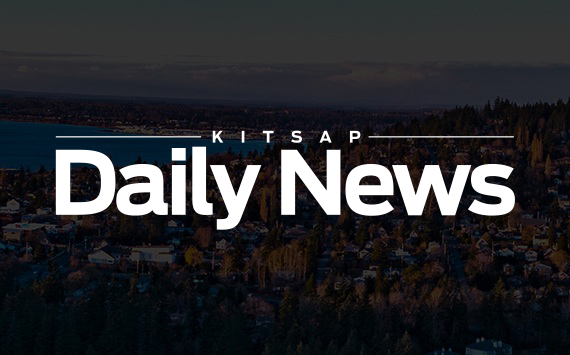On the evening of June 13, the M/V Walla Walla crew received a call from the U.S. Coast Guard who requested help rescuing two 18-year-olds from the water following their canoe flipping over.
The Walla Walla diverted from its assigned Seattle-Bremerton route to assist the canoeists. Washington State Ferries 2nd mate James Kuijper, who works on the Seattle-Bremerton route, shared his experience being part of an emergency response.
“My crew and I mobilized all of our rescue equipment down to the rescue boat. We knew we would be launching a rescue boat. We knew that if we pulled people out of the water, they were going to be cold, and we also brought equipment like oxygen and a defibrillator in case we had a real drowning and we needed to restart a heart,” he said. “So we brought all that equipment and staged it right there on the car deck next to our rescue boat station,” he said.
The captain rang the bell to notify crewmembers about the rescue. Different bells notify crewmembers of a particular emergency response, Kuijper said. The captain also used the PA system to ask if medical professionals were onboard and able to assist the crew, he said.
Kuijper said five medical professionals volunteered to assist, and met the crew on the car deck at the rescue boat station to be briefed on the rescue plan.
“Once we had the victims back aboard, we would get them upstairs quickly and get their wet clothes off and get them wrapped up and dressed in a very thick, insulating fireman’s outfit,” he said. “That’s the best, warmest clothing that we had on board to get a patient into.”
Kuijper said crews also have thermal chemical packets aboard to help heat up patients experiencing hypothermia. Additionally, he provided crewmembers directly involved in the rescue with instructions including: where the rescue boat needed to go, confirming the total number of people needing rescuing, and confirming everyone was accounted for.
“The reason it went better than we could have planned was because we had these talented medical people aboard to help treat hypothermia, and we can’t always drill for that and plan to have extra medical help aboard, but they were there, and they volunteered to help,” he said. “Sometimes, when you’re involved in an emergency and it’s such a surprise and such a shock to you that it’s almost like there’s a little movie playing, and it’s almost like time is compressed, and things may be happening fast, but they seem to be happening slow,” he said.
During the June emergency, crewmembers prioritized rescuing the swimmers while other first responders handled the adrift canoe, which was later recovered, Kuijper said.
“We could provide better medical care for them right away, on board the ferry, then a small Coast Guard rescue boat could,” he said.
Kuijper said they returned to Bremerton, where local fire/EMS took over care for the patients.
Types of emergency crewmember training
WSF is regulated by the U.S. Coast Guard which also requires the agency to complete certain training requirements and practice certain emergency responses. WSF crewmembers complete a minimum of three drills every week including fire drills, abandon ship and rescue drills.
New crew members also attend a new mate orientation, which is a 15-day comprehensive course and includes: basic fire fighting, first aid & CPR, and personal survival techniques, Grace Greer, deck workforce development lead, said.
Crew member responsibilities for onboard emergencies are broken down based on a muster list which outlines the specific duties crew members need to complete in the event of an emergency. These are published around the passenger cabins of vessels.
“Things happen, and what’s written on paper isn’t always realistic. So when we get, new hires that come in, for example, if our crews are really dialed in into their individual positions, we’ll have a new hire practice something they wouldn’t normally get a chance to do, so that they have more knowledge about, what actually is happening, and so that if an emergency happens for real, they’re also able to slide into that spot,” a WSF chief mate/training instructor Chloe Cox said.
Cox said emergency responses can vary widely based on the needs of specific situations.
“I would be willing to bet there’s some sort of rescue scenario that happens every single week somewhere in the fleet, whether the news finds out about it or not,” she said.
Josh Perry, a chief mate/training instructor, described some of the more frequent emergency responses crews may respond to.
“Some of the bigger events that we’re involved in, a lot of times, are people that have capsized in a kayak or a canoe or kite borders that are down near Alki,” Perry said. “I can’t count the number of times that calls have come about, that we’ve had to divert from Bremerton and go over and investigate, and make sure that a person was not in distress.”
Despite the routine and often safe and uneventful ferry crossings, Kuijper said safety is at the forefront of every crewmember’s mind.
“The most important thing in an emergency is to account for the passengers, reassure them, and take charge of their safety,” he said. “Crew members are always drilling and always training to serve the public and to navigate the waters safely in all seasons.”



